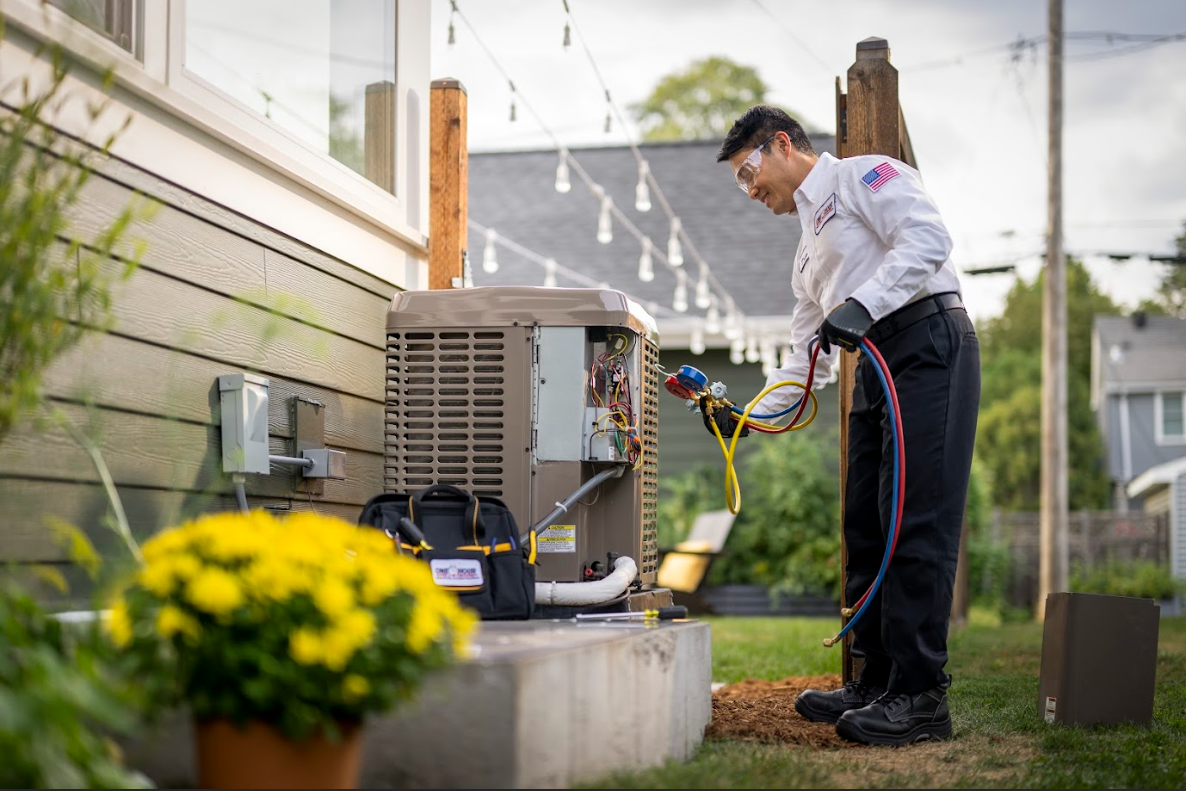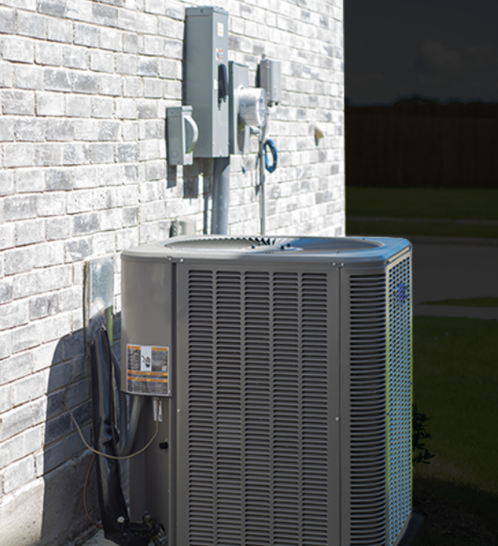
Why your furnace isn’t blowing warm air
Cold air from a furnace in January can feel like a gut punch. In Ogden, a sudden north wind can drop evening temps into the teens, and a cold-blowing system can turn a normal night into space heaters and extra blankets. This article explains the most common reasons a furnace pushes cool air, how to spot the quick fixes, and when it is smarter to call for furnace repair in Ogden. The goal is simple: get heat back fast and protect the equipment from bigger problems.
Start with the easy checks
A surprising share of no-heat calls end with simple fixes. In Weber County homes, the most common starter issues show up at the thermostat, the filter, or the breaker. If a system was recently serviced or the power flickered during a storm near Harrison Boulevard or West Haven, the thermostat can drift to the wrong mode or schedule. A clogged filter will also choke airflow and cause safety switches to shut the burners down, which leaves the blower moving air that never warms up.
Homeowners can run a short sanity check before calling for furnace repair in Ogden UT. Set the thermostat to Heat, Fan Auto, and a temperature 3 to 5 degrees above room temp. Replace a dirty filter and make sure registers are open, especially the large return grills in the hallway. Check the furnace switch next to the unit and the breaker in the panel. If the furnace restarts and blows warm air for a few minutes then turns cool, keep reading — that pattern points to a different issue.
Short heat, then cold air: what cycling tells you
A furnace that warms briefly and then blows cold often shuts itself down on a safety. The blower keeps running to cool the heat exchanger, so you feel unheated airflow. Three usual suspects cause that sequence.
First, a clogged filter or blocked return limits airflow and overheats the heat exchanger. The limit switch opens, the burners shut off, and the blower clears heat until the switch resets. Second, a dirty flame sensor loses the flame signal after ignition. The control board cuts gas for safety and the blower coasts. Third, weak airflow from an undersized or failing blower motor means the heat exchanger runs hot even with a clean filter. In Ogden’s older brick homes near 25th Street, original ducts can be narrow, which compounds the airflow problem and shows up as frequent limit trips on cold nights.

A technician will read fault codes on the control board, check temperature rise across the furnace, measure static pressure, and clean or replace the flame sensor. If the temperature rise is out of spec, the fix may be as simple as a filter upgrade and duct adjustments, or as involved as a blower motor replacement.
Thermostat and settings that sabotage heating
Thermostats cause more furnace confusion than any other part. Heat pumps with gas furnace backups are common in new builds around North Ogden. If a thermostat is configured for the wrong equipment type, it may lock the system in fan mode or call for the heat pump while the gas furnace sits idle. Batteries that are low can drop the call for heat without warning.
Two setting traps stand out. Fan On runs the blower constantly even when the burners are off, so the vents feel cool between cycles. Smart schedules can also throttle heat to “Eco” during the exact hours a family is home. A quick test is to set the thermostat to Heat, Fan Auto, and switch to a simple Hold at a higher setpoint. If heat returns and stays steady, the thermostat likely needs a programming cleanup or reconfiguration.
Pilot lights, igniters, and gas supply
Most furnaces in Ogden use an electronic hot surface igniter (HSI) or spark ignition. Older units with standing pilots still exist in bungalows near East Bench. If a standing pilot goes out, the furnace will never produce burner flame. Drafts, a weak thermocouple, or a dirty pilot orifice cause that failure. With electronic ignition, a cracked HSI glows weakly or not at all. The board opens the gas valve briefly, fails to confirm flame, and then locks out after a few tries.
Gas supply issues can mimic ignition trouble. A partially closed gas cock next to the furnace or a kinked flex connector reduces flow. After a gas outage or meter work, air trapped in the line can cause a few failed starts until the system purges. If you smell gas, leave the home and call the utility immediately, then schedule service. For all other ignition concerns, a tech will ohm-test the igniter, verify microamp flame signal, check inlet and manifold gas pressure, and clean the burner assembly.
Cold air with the burners off: blower-only conditions
Sometimes the furnace never lights, yet the blower runs. That points to a tripped limit switch, a stuck fan relay, or a control board command. High-limit trips come from airflow restrictions or heat exchanger hot spots. A stuck relay on older boards keeps the blower energized even without a heat call, which makes the whole house feel drafty. If the blower runs with the thermostat set to Off, a tech will test the G circuit, inspect the board, and check for water in the secondary heat exchanger on high-efficiency models. Condensate backups are common in furnaces with long horizontal vents across basements in West Ogden; a clogged trap forces the pressure switch to open and the board may default to fan mode.
Heat pump vs. gas furnace behavior
Mixed systems can confuse expectations. In a dual-fuel setup, the heat pump handles mild days while the gas furnace takes over in deeper cold. During defrost cycles, a heat pump briefly switches to AC mode to clear frost, and the system relies on auxiliary heat to keep supply air warm. If the thermostat is not set to bring on gas during defrost, the air can feel cool for several minutes. A professional can verify outdoor sensor readings, balance points, and staging so Ogden homes get steady warm air even during lake-effect frost events.
Duct and home factors that feel like furnace failure
A furnace can run perfectly and still deliver cool air at the registers if duct issues steal heat. Disconnected or leaky supply trunks in unconditioned basements or garages dump warm air before it reaches rooms. Return leaks in crawlspaces pull in cold air that chills the supply temperature. Undersized returns create whistling vents, high static pressure, and hot furnaces that trip limits.
Homes along Washington Boulevard with additions often have a new room tapped into an old trunk without resizing. That back bedroom then feels cool even when the furnace is healthy. A static pressure test, duct inspection, and infrared scan will find those losses quickly. Sealing and resizing ducts often restores warm delivery without touching the furnace.
Safety controls doing their job
Modern furnaces protect the home by shutting down when sensors detect unsafe conditions. That is why a cold-blowing furnace might be the safest outcome. Four controls deserve respect. The high-limit switch responds to overheating. The flame rollout switch trips if flame escapes the burner box, often from blocked heat exchangers or cracked burners. The pressure switch verifies proper draft; blocked flue pipes from snow at rooftop terminations in Ogden can open this switch. The flame sensor confirms ignition; a poor signal shuts gas off.
Resetting these controls without fixing the cause risks bigger damage, including heat exchanger cracks. A certified technician will test each control, inspect the exchanger with mirrors or cameras, and verify venting. If the exchanger is cracked, replacement beats repair on safety grounds.

Maintenance habits that prevent cold air
Two services pay off every winter along the Wasatch Front. First, change filters regularly. In homes with pets or construction dust, a 1-inch filter may need replacement monthly; a 4-inch media filter often lasts 3 to 6 months. Second, book annual furnace maintenance before the first freeze. A thorough service includes combustion checks, temperature rise, flame signal cleaning, condensate flush, blower cleaning, and verification of safeties. Systems that receive this treatment rarely surprise anyone on a Saturday night.
When it is time to call a pro in Ogden
DIY checks make sense up to a line: filter, thermostat, breakers, and visible vent blockages at the sidewall. Once ignition parts, gas pressure, flame sensors, control boards, or limit https://www.onehourheatandair.com/ogden trips enter the picture, professional testing protects both the equipment and the family. Repeated short cycling can crack a heat exchanger. Misdiagnosed igniters can waste parts money. A local team that handles furnace repair in Ogden knows how high-altitude settings, winter inversions, and neighborhood duct styles influence performance.
Here is a short, safe decision path for homeowners:
- If the furnace never lights or shuts off after a few seconds and you smell gas, exit and call the utility, then schedule service.
- If the furnace lights, blows warm, then switches to cool within minutes, replace the filter and open all vents; if it repeats, call for service.
- If the blower runs with no heat and the thermostat is Off, turn off the furnace switch and book a repair.
- If a sidewall vent is iced or blocked, clear it gently, restart, and monitor; if problems persist, call a technician.
- If heat is fine at the furnace but some rooms are cold, ask for a duct inspection with static pressure testing.
What One Hour Heating & Air Conditioning brings to the fix
Local experience matters. Techs who work Ogden daily know the quirks of downflow furnaces in tight closets off Monroe Boulevard, the way wind loads hit rooftop vents near Bonneville Park, and the static pressure pain in older Syracuse and South Weber additions. That context speeds diagnosis and prevents repeat failures.
Service trucks carry common parts for the area’s popular models: hot surface igniters, flame sensors, pressure switches, capacitors, and blower motors that fit frequent sizes. Most no-heat calls finish on the first visit. Clear pricing means no guesswork. Before leaving, the team verifies temperature rise, checks carbon monoxide at registers, and confirms your thermostat settings so the house stays warm after the door closes.
Ready for fast furnace repair in Ogden
If the furnace is blowing cold air, start with the simple checks. If the problem returns or safety controls trip, bring in a professional. One Hour Heating & Air Conditioning handles urgent furnace repair in Ogden and nearby neighborhoods — North Ogden, Riverdale, Roy, West Haven, and South Weber. Call or book online for same-day service. Warm air should be a given in an Ogden winter, and it can be again within a single visit.
One Hour Heating & Air Conditioning provides trusted furnace repair in Ogden, UT and full-service HVAC solutions for homes and businesses. Family-owned and operated by Matt and Sarah McFarland, our company is built on honesty, hard work, and quality service—values passed down from Matt’s experience on McFarland Family Farms, known across Utah for its sweet corn. As part of a national network founded in 2002, we bring reliable heating and cooling care backed by professional training and local dedication.
Our licensed technicians handle furnace and AC installation, repair, and maintenance, heat pumps, ductless mini-splits, thermostat upgrades, air purification, indoor air quality testing, humidifiers, dehumidifiers, duct cleaning, zoning systems, and energy-efficient replacements. We stand by a 100% satisfaction guarantee through the UWIN® program and provide honest recommendations to help Ogden homeowners stay comfortable year-round.
Call today for dependable service that combines national standards with a personal, local touch.
One Hour Heating & Air Conditioning
1501 W 2650 S #103 Phone: (801) 405-9435 Website: https://www.onehourheatandair.com/ogden
Ogden,
UT
84401,
USA